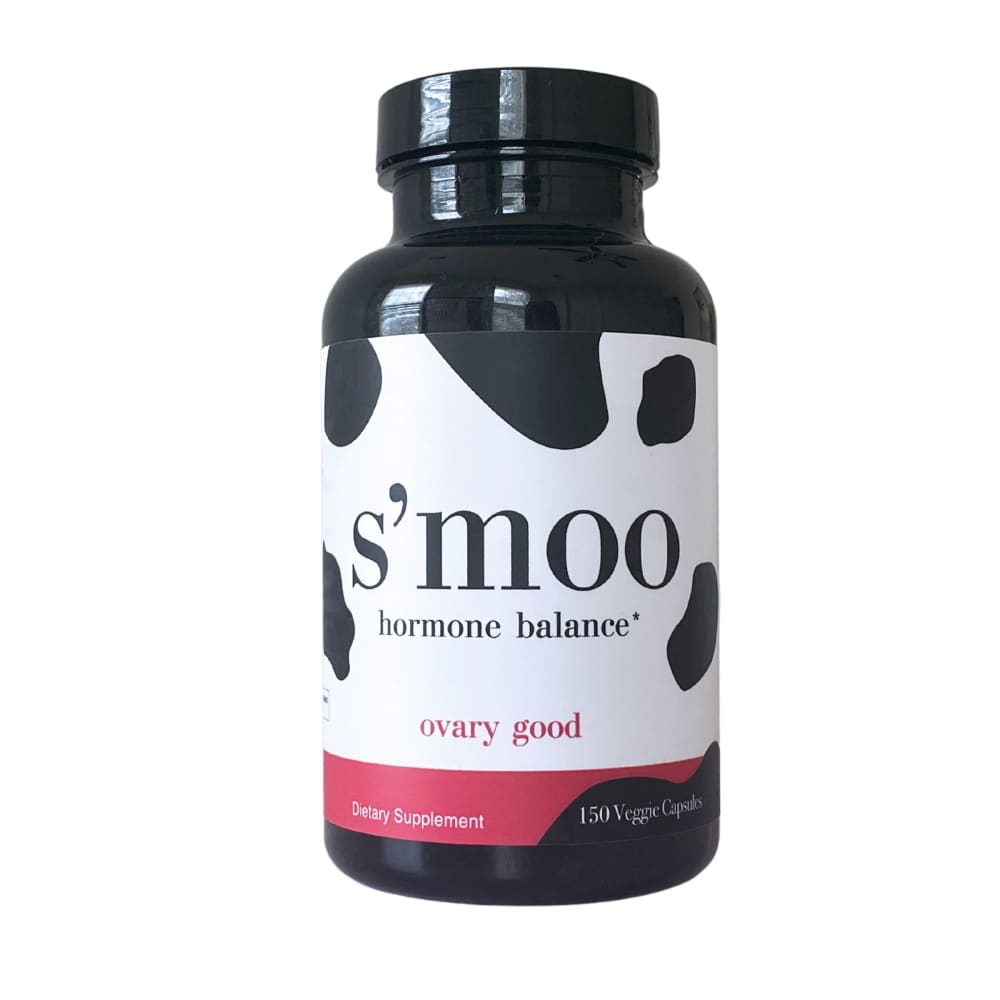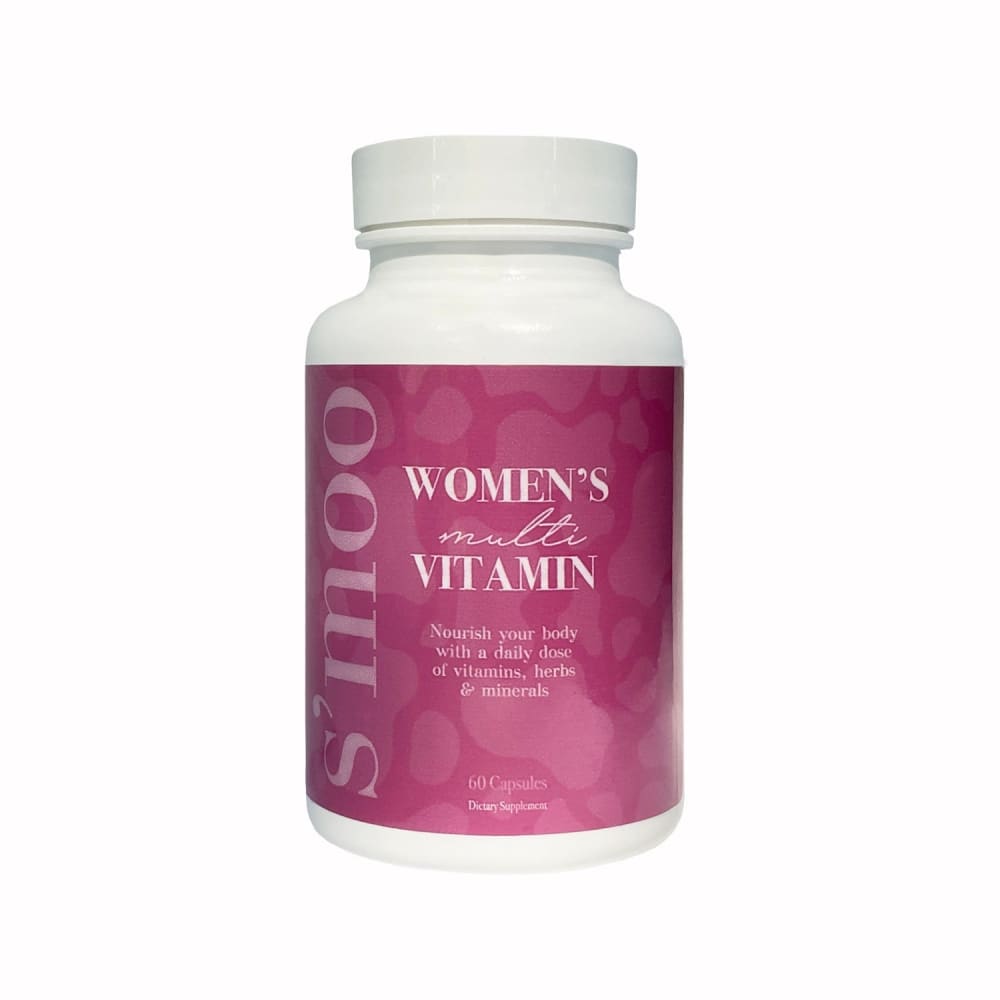Understanding Low Progesterone: Causes, Symptoms, and Treatments
Your period is due any day now. Or a positive pregnancy test… It could go either way.
You’ll either be doubled over on the couch, embracing a heating pad and a bag of salt and vinegar chips – or beginning the journey of incessant food-googling. Can pregnant people eat lunch meat? Guess we’ll have to wait and see.
But then, like clockwork, you notice light brown spotting a few days before your period. Adding insult to injury, it’s your sign that you’re getting a period and a few bonus days of bleeding. Setting out the box of pantyliners a few days early has become a monthly routine. But is spotting before your period normal?
Abnormal uterine bleeding could be a sign of low progesterone. It’s important for your hormones to be balanced, especially if you’re trying to get pregnant.
Let’s discuss progesterone – what it does, why you need it, and what happens when you don’t have enough of it. Discover how to tell if you have low progesterone and what to do about it.

What Is Progesterone’s Role in Your Menstrual Cycle?
Throughout your menstrual cycle hormones work together to nurture, release, and fertilize an egg. The primary hormones driving the process are estrogen and progesterone.
In the first half of your menstrual cycle, estrogen plays a significant role in ovulation. This is when the ovary releases a mature egg to be fertilized.
After ovulation, the empty egg follicle turns into a temporary structure called the corpus luteum. The corpus luteum releases progesterone, a steroid hormone responsible for helping you get and stay pregnant.
Progesterone levels begin to rise after ovulation. If the egg is fertilized, progesterone continues to rise to support implantation. This is when the fertilized egg nestles into the uterus to grow into a baby.
Progesterone is responsible for thickening the uterine lining. This creates a healthy womb to nourish the fertilized egg. It continues to nourish the egg until the placenta takes over later on in pregnancy.
Meanwhile, progesterone prepares your breasts for milk production. This is why you may notice breast tenderness after ovulation. Other signs of changing progesterone are associated with PMS symptoms. [1] It can cause bloating, mood swings, and exhaustion.
If the egg is not fertilized in a cycle, progesterone levels drop off and the corpus luteum will break down. At this point, you’ll get a period.
Causes of Low Progesterone
If you’re trying to conceive or are newly pregnant, it’s crucial to have healthy progesterone levels.
Low progesterone is a common cause of infertility and frequent miscarriages. It may also cause estrogen dominance. Estrogen levels can get too high because they’re making up for a lack of progesterone.[2]
The most accurate way to know your hormone levels is to get labwork checked. If you suspect you have low progesterone, you can start making a few changes today.
Here are some possible causes of low progesterone in a generally healthy, premenopausal woman:
Anovulatory Cycles
Anovulation is when an egg isn’t released in a menstrual cycle. There needs to be an empty egg follicle for the corpus luteum to release progesterone.
You may have an anovulatory cycle without realizing it. An estimated 1 in 10 women of childbearing age experience anovulation sometime in their life.[3]
Common causes of anovulatory cycles are Polycystic Ovary Syndrome (PCOS), menopause, and low body mass index.
Luteal Phase Deficiency (LPD)
The luteal phase is the second half of your menstrual cycle, beginning after ovulation. A short luteal phase can impair your body’s ability to support a pregnancy.
Luteal phase deficiency is a condition involving insufficient amounts of progesterone. It impairs implantation and embryo growth. It’s a common cause of infertility and early pregnancy loss.
Although its cause is not fully known, experts believe LPD is related to a poorly functioning corpus luteum. It’s characterized by a luteal phase lasting less than 10 days and low progesterone levels.[4]
Your healthcare provider will need to gather information and do tests to diagnose LPD. The most effective way to treat luteal phase deficiency is to discover and correct the underlying cause.
Stress
When you’re stressed, your body makes a hormone called cortisol. Cortisol comes from the same source as progesterone. High levels of cortisol can block progesterone production.
If you’re concerned about low progesterone, try to make time to zen out during your busy day. Consider adding stress-relieving habits to your day like:
- Starting your day with a 10-minute mediation
- Lighting a candle when you unwind for the day
- Incorporating supplements with stress-relieving adaptogens into your diet.
Symptoms of Low Progesterone
Low progesterone may cause disruptions in the second half of your cycle. It can lead to intense PMS symptoms or changes to period bleeding.
For pre-menopausal, nonpregnant women, symptoms of low progesterone[5] may include:
- Spotting between periods
- Irregular or absent periods
- Migraines
- Cravings
- Irritability
- Anxiety or depression
- Fatigue
- Insomnia
Progesterone is essential in pregnancy to maintain a healthy womb. Low progesterone during pregnancy may cause:
- Spotting
- Low belly pain
- Constant fatigue
- Frequent miscarriages
The good news is hormone imbalances can be corrected. Discuss your fertility goals with your healthcare provider to decide how to treat low progesterone.
Treatment Options for Low Progesterone
If you suspect you have low progesterone, talk to your healthcare provider. How you treat low progesterone will depend on the cause.
Some medications cause hormone imbalances. Be prepared to share which medications or supplements you’re taking, as well as a basic health history with your provider.
Getting Your Progesterone Levels Checked
Your OBGYN may recommend having progesterone levels checked on a specific day of your cycle. If you’re not already tracking your menstrual cycle, now is a good time to start.
Progesterone levels can be used to investigate the causes of infertility or miscarriages. It can also be measured to confirm ovulation. The timing and purpose of a progesterone test will depend on your trying-to-conceive status.
Progesterone Replacement Therapy
Your doctor may prescribe progesterone replacement therapy if your levels are low. There are various types of replacement therapies, including:
- Topical creams or gels
- Vaginal inserts
- Capsules
- Intramuscular injections
It’s important to get your levels tested before beginning any therapy. Talk to your provider about whether progesterone replacement therapy is right for you.
How to Treat Low Progesterone Naturally
The first step toward balanced hormones is getting to know your cycle. How long does your menstrual period last? What are your typical PMS symptoms? Keeping a record of symptoms and dates helps you understand your hormone patterns.
Next, take a look at the stress in your life. It may be time to make changes to reduce stress if it’s affecting your health.
You can also combat low progesterone with diet changes. Although there are no foods that contain progesterone, some foods help produce it.
Consider eating foods rich in nutrients that help your body make progesterone, like:
- Vitamin B6: Tuna, salmon, and chickpeas
- Magnesium: Pumpkin seeds, dark chocolate, quinoa\
- Zinc: Hemp seeds, lentils, red meat
- Inositol: Beans, cantaloupe, brown rice
- Vitamin D3: Eggs, fish, mushrooms
- Vitamin C: Citrus fruits, white potatoes, bell peppers
If you’re taking a daily multivitamin, check to see if it contains these nutrients. You can find most of them in the S’moo Ovary Good, a hormone-balancing supplement powder.
It’s helped thousands of women meet their hormone goals after taking one scoop a day. S’moo customers have overcome hormone challenges to get regular periods and get pregnant.*
What to Do if You Think You Have Low Progesterone
So you got your period again this month? That’s okay – you can make some changes to improve your chances of getting that BFP (big fat positive) next cycle.
It starts with balancing hormones. You can incorporate certain diet and lifestyle changes to combat low progesterone. Balanced progesterone improves your chances of getting and staying pregnant. As always, talk to your healthcare provider to discuss testing and treatment.
We realize turkey subs and salt and vinegar chips didn’t make the cut for ways to naturally balance hormones. Consider swapping out your usual comfort foods with nutritious hormone-balancing choices. Add S’moo Ovary Good hormone-balancing powder to your favorite smoothie today!
*Claims are based on S’moo customer success stories. Everyone’s body is different, so talk to your doctor about whether daily supplements are right for you. This is not medical advice.
Sources:
- Progesterone for premenstrual syndrome
- High estrogen
- Anovulation
- Luteal Phase Deficiency in Regularly Menstruating Women: Prevalence and Overlap in Identification Based on Clinical and Biochemical Diagnostic Criteria
- Reproductive hormones
By Alexa Davidson, MSN, RN
Alexa is a registered nurse and freelance health writer. As a nurse, she spent over a decade taking care of sick babies in neonatal and pediatric cardiac intensive care units.
After earning a master’s degree in nursing education, Alexa began teaching associate degree nursing students. Now she’s teaching everyday readers about their health through copywriting
Alexa believes health information should be accessible to anyone. She’s focused on writing approachable content that empowers women to take control of their reproductive health.
As an emerging FemTech copywriter, Alexa’s work is featured on product blogs like the Inito Fertility Monitor. She’s also a nurse writer and subject matter expert at NurseJournal, Working Nurse Magazine, and Indeed.
When she’s not writing, Alexa is probably in the kitchen. Her specialty is making healthy versions of comfort foods. Black bean brownies, anyone?










